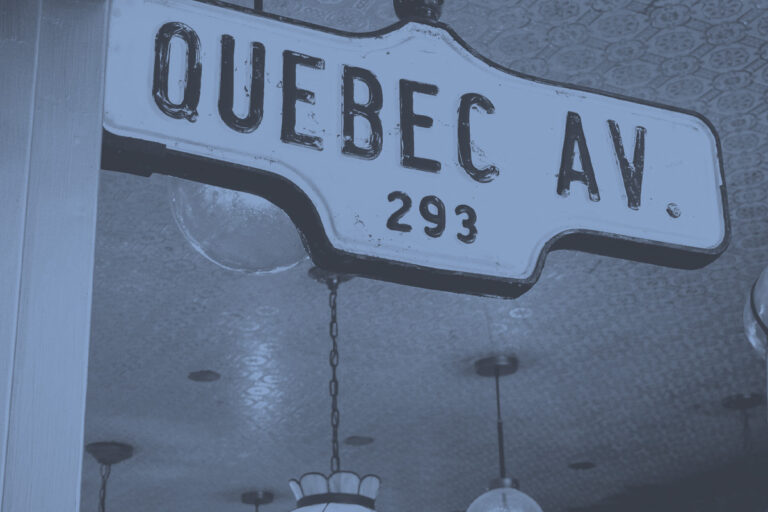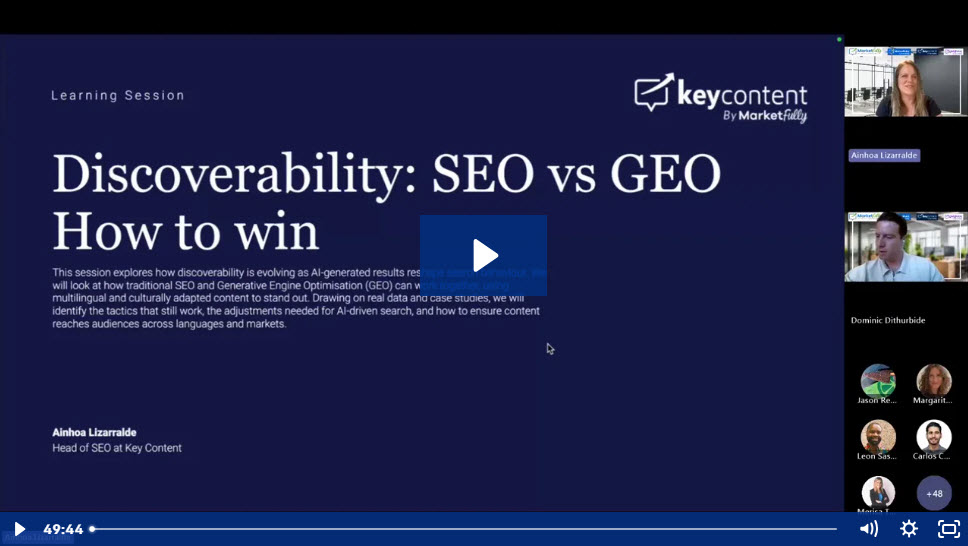Is translation or local content creation going to get it done?
It used to be that a multilingual strategy was optional, but today, it’s a strategic imperative.
In today’s global markets, a single English page must somehow speak to audiences in Tokyo, Turin or Texas, and how it speaks makes all the difference. Should you translate words verbatim, or adapt idioms, symbols, and style so the message feels native?
Google’s recent emphasis on helpful content and its AI-driven “Overviews” means generic machine translations might actually lose traffic. If a local-language page doesn’t exist, Google may auto-translate your English content and serve its version to users. If you want to rank and resonate, your brand must choose between translation, localisation, transcreation, or native content creation, each a distinct path with its own trade-offs.
Our aim here is to define each one for you, weigh up the pros and cons, and offer a decision checklist (with SEO, nuance, brand, speed, cost, complexity and platform in mind) to guide the choice for your product and market.
Four separate paths to choose from
There are various ways to create your multilingual content, with translation being the simplest way. Translation is a literal conversion of text from one language to another. “Translation is the process of rendering text from one language into another so that the meaning is equivalent”. It aims for accuracy and consistency and works perfectly for technical documents, user guides, or compliance materials where precise instructions matter. Because it follows the source text closely, translation is usually the fastest and cheapest route, and you can often harness machine translation or bilingual staff and reuse a single workflow.

Translation’s very literalness can be a liability in marketing because it may sound flat or foreign to local readers, and from an SEO standpoint, plain translation can underperform. If you “just translate” without doing local keyword research or adapting to different styles, you may end up “paying for a translation with no guarantee that someone in the target country will be able to find your website”.
In practice, English phrases that rank well on Google often don’t line up with what non-English speakers search, so machine-text might never attract local visitors.
In short:
- Pros (Translation): Fast turnaround, low cost, guaranteed technical accuracy and consistent terminology (brand voice stays aligned). Works well for straightforward product info or legal text.
- Cons (Translation): Misses local flavour and SEO nuance. Literal renderings can seem stiff or confusing in another culture. Without adapting keywords and idioms, traffic may stay low. Machine-generated or out-of-context translations can even flag Google’s spam filters as unhelpful AI content.
Localisation, on the other hand, mixes translation with cultural adaptation. Localisation still translates the words, but then tweaks images, currency, date formats, idioms and tone to suit the target market. It goes beyond translation by considering linguistic, cultural and regional factors.
E.g., a US site might change spellings (color vs. colour) and swap an “apple pie” image for apple crumble when addressing Brits. Localisation makes sure that the user experience feels native, including spelling, visuals, and humour that match local expectations. It can target legal/regulatory differences (e.g. measurements in kg vs lb) and SEO issues (like hreflang tags for country vs language).
Most e-commerce and SaaS sites use localisation by translating web pages and then adapting product names, layouts, or calls-to-action for each locale.
- Pros (Localisation): Strong cultural fit without completely reinventing content. It balances consistency (same core message) with relevance (local idioms, images, formats). Usually faster and cheaper than full creative rewriting, especially at scale. Built-in SEO tweaks (like local keywords, technical setups) improve findability.
- Cons (Localisation): Some nuance and emotion may still get lost. You’re constrained by the original source’s structure, so you can’t fully tailor messaging. Ambiguous phrases or slogans may still feel off. Localisation projects often require careful QA (so meaning isn’t warped) and still depend on the original copy’s limitations.

Transcreation is a more radical, creative pivot and is sometimes called creative translation, where you recreate the content for each locale rather than just translating it. Transcreation goes beyond literal translation to adapt content creatively for a specific target audience, recreating the message in a different cultural context while maintaining its intended impact. In other words, slogans, ad copy, headlines, taglines, and other brand voice elements are rewritten by copywriters who are fluent in the target culture.
For example, in one case, a British shoe brand’s product names and descriptions were transcreated rather than translated. They had UK names like “London Rain” and “Cosy Boots” that didn’t resonate in Spain or Germany, so translators rewrote names and descriptions in each language to preserve the emotion and appeal. This approach made sure the message (e.g. of comfort or style) came through to each audience in local terms.
- Pros (Transcreation): Maximum impact on local audiences. A transcreated campaign feels like a homegrown advertisement and speaks to the values and trends of that specific culture. Brand voice and storytelling stay vivid and on-point, which drives engagement and conversions. Ideal for high-stakes marketing materials, emotional appeals, or creative content (like taglines, social campaigns, or multimedia).
- Cons (Transcreation): The cost and time are high. Each piece is essentially written twice (or more), so budgets multiply. Brand consistency can suffer if different teams interpret the voice differently. And since transcreation is creative, turnaround is slower. This is usually reserved for campaigns rather than routine product specs.
Finally, multilingual (native) content creation means starting from scratch in each language. Instead of writing in English and then converting, you write directly in each target language with local experts or writers. Infomineo calls this “creating content from scratch in multiple languages simultaneously”. In effect, each market gets its own tailored content plan. This could mean separate blog strategies, social posts, and UX copy that may not even mirror the original copy. Because content is born in-language, it can incorporate local SEO insights, cultural context, and native phrasing from day one.
As an example, if a company operates in Japan and Brazil, they might produce entirely different articles that speak to Japanese consumers’ interests and Brazilian search trends, respectively, rather than copying English pages.
- Pros (Native Content Creation): Highest market resonance and SEO potential. Content is inherently local, and writers can weave in target-language keywords naturally and address local search intent so pages rank better for native speakers. There’s no “translation loss” or awkward phrasing. This gives us the most authentic, nuanced voice and can double as a full cultural strategy.
- Cons (Native Content Creation): Highest cost and effort. You need content teams, budgets, and strategy per market. Coordinating multiple content calendars and approvals is complex, and keeping a unified brand image (tone, key messaging) consistent across versions is challenging. Speed to market will suffer, since everything is freshly created.

Tailoring to industries like B2B vs B2C (fashion vs manufacturing)
One thing to be sure of is, different industries call for different tactics.
In B2C fields like fashion or retail, the goal is emotional engagement and brand story, where transcreation or full content creation often wins over the others. A global shoe retailer shouldn’t simply call a style “pumps” or “combat boots” when trying to gain traction in foreign markets. Their local writers must rewrite these with culturally appealing terms and keep the brand’s tone to improve overseas sales. B2C marketing is dynamic and trend-driven, so it thrives on creative, culturally-rich content with local colour, humour, and SEO keywords.
In contrast, B2B or industrial sectors (like manufacturing) often demand precision and technical accuracy, and content is usually more factual and standardised. For instance, Flexco, a conveyor manufacturing firm, succeeded by translating and locally adapting its website for each region, which boosted global reach and made complex product information accessible to local buyers. In cases like this, you could get away with clear translation or localisation.
B2B localisation prioritises technical accuracy and a professional tone, where B2C leans on emotional appeal and engaging language. Technical products (B2B) can usually stick closer to their original wording, while consumer-focused brands (B2C) should invest in creative localisation or transcreation to connect.
When to use which
To choose wisely, think about your SEO goals, audience nuance, brand alignment, speed, cost, and platform. The table below summarises the strengths of each approach.
In general, if search visibility and local relevance are critical (and budget allows), favour native content creation. If speed and cost are most important (with straightforward content), translation or localisation may win.
| Criteria | Translation | Localisation | Transcreation | Native Content Creation |
| SEO Performance | Fair. Only targets local keywords and might miss meaning. |
Good. Builds on translation with local SEO best practices. |
Good. Creative copy can include keywords naturally, but emphasis is on branding. |
Best. Inherently keyword-optimised for each market |
| Market Nuance | Low. Content is tethered to source context. |
Moderate. Adapts idioms/units and UX elements. |
High. Fully designed for emotional impact in each culture. |
Very High. New content per locale. |
| Brand Consistency | High. Voice and message are identical across languages. |
Moderate. Core message same, but tone/imagery may vary. |
Variable. Each version can diverge creatively. |
Variable. New content needs to be overseen. |
| Speed to Market | Fast. One streamlined workflow. |
Fast–Medium. Quicker than full rewrite. |
Slow. Creative development is time-consuming. |
Slowest. Building original content is time-intensive. |
| Cost | Low. Easy to scale. |
Medium. Costs more than raw translation. |
High. Involves high-paid linguists/copywriters. |
Highest. Duplicates effort for each language. |
| Content Complexity | Best for technical/simple content. If material is factual. |
Versatile. Adds context for both technical and marketing content. |
Best for creative marketing. Taglines, slogans and ads need transcreation. |
Best for thought leadership. Complex ideas can be framed per culture. |
| Platform Fit | Works on any platform with multilingual support. | Suits interactive digital content. | Ideal for marketing platforms where creative copy is central. | Requires a content management strategy |
In practice, many teams blend the methods they use. They might translate help pages (low nuance need), but transcreate the homepage hero banner and blog headlines. The key is to match the approach to the content purpose and market need.

A couple more things to check out
Google’s algorithms reward content that serves users first, and recent research shows that when Google’s AI Overviews can’t find a native-language source, they will auto-translate English content on-the-fly and host it on Google’s own domain, effectively capturing international traffic.
The cure is to have rich, localised content of your own so users find your pages first. Key Content understands that, in the age of “AI search”, local relevance will always trump translation. You can check out our analysis “Are Fewer Clicks Better Clicks?” for more on engagement vs. click metrics in AI overviews.)
In summary, there is no one-size-fits-all strategy to hang your hat on. If your budget is tight and the content is simple, start with translation/localisation and build from there. If brand storytelling or SEO is most important to you, invest in transcreation or native content creation, and always use local keyword research and voice-of-customer insights to inform your choice.
When done well, multilingual content, whether it’s adapted or original, will attract local audiences and drive growth across the globe.





